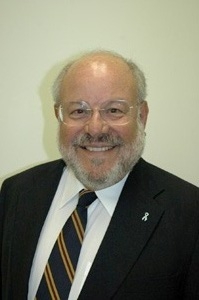With the 25th anniversary of the Chernobyl nuclear plant catastrophe having arrived, and with the disaster at the Fukushima nuclear complex still unfolding--and radioactivity continuing to spew from those plants--some people are asking: can nuclear power be made safe?
The answer is no. Nuclear power can never be made safe.
This was clearly explained by Admiral Hyman Rickover, the "father" of the U.S. nuclear navy and in charge of construction of the first nuclear power plant in the nation, Shippingport in Pennsylvania. Before a committee of Congress, as he retired from the navy in 1982, Rickover warned of the inherent lethality of nuclear power--and urged that "we outlaw nuclear reactors."
The basic problem: radioactivity.
"I'll be philosophical," testified Rickover. "Until about two billion years ago, it was impossible to have any life on Earth; that is, there was so much radiation on earth you couldn't have any life--fish or anything." This was from naturally-occurring cosmic radiation when the Earth was in the process of formation. "Gradually," said Rickover, "about two billion years ago, the amount of radiation on this planet"reduced and made it possible for some form of life to begin."
"Now, when we go back to using nuclear power, we are creating something which nature tried to destroy to make life possible," he said. "Every time you produce radiation" a "horrible force" is unleashed. By splitting the atom, people are recreating the poisons that precluded life from existing. "And I think there the human race is going to wreck itself," Rickover stated.
This was Rickover, a key figure in nuclear power history, not Greenpeace.
The problem is radioactivity--unleashed when the atom is split. And it doesn't matter whether it's a General Electric boiling water reactor such as those that have erupted at Fukushima, or the Westinghouse pressurized water design, or Russian-designed plants like Chernobyl, or the "new, improved" nuclear plants being touted by U.S. Energy Secretary Steven Chu, a nuclear scientist and zealous promoter of nuclear technology. All nuclear power plants produce radiation as well as radioactive poisons like the Cesium-137, Iodine-131 and Strontium-90 that have been--and continue to be--spewed from the Fukushima plants.
Upon contact with life, these toxins destroy life. So from the time they're produced in a nuclear plant to when they're taken out as hotly radioactive "nuclear waste," they must be isolated from life--for thousands for some millions of years.
In the nuclear process, mildly radioactive uranium is taken from the ground and bombarded by neutrons--and that part of the uranium which can split, is "fissile," Uranium-235, is transformed into radioactive twins of safe and stable elements in nature: There are hundreds of these "fission products." The human body doesn't know the difference between these lethal twins and safe and stable elements. Also produced are alpha and beta particles and gamma rays, all radioactive.
In addition, much of the larger part of uranium, Uranium-238, which cannot split, grabs on to neutrons and turns into Plutonium-239, the most radioactive substance known.
In this atom-splitting, too, heat is produced--which is used to boil water. Nuclear power plants are simply the most dangerous way to boil water ever conceived.
Why use this toxic process to boil water and generate electricity? It has far less to do with science than with politics and economics--from the aftermath of the Manhattan Project to today During the World War II Manhattan Project, scientists working at laboratories secretly set up across the U.S. built atomic weapons. By 1945, it employed 600,000 people and billions of dollars were spent. Two bombs were dropped on Japan. And, with the war's end, the Manhattan Project became the U.S. Atomic Energy Commission and more nuclear weapons were built. But what else could be done with nuclear technology to perpetuate the nuclear undertaking?
Many of the scientists and government officials didn't want to see their jobs end; corporations which were Manhattan Project contractors, notably General Electric and Westinghouse, didn't want to see their contracts ended. As James Kunetka writes in his book City of Fire about Los Alamos National Laboratory, with the war over there were problems of "job placement, work continuity"more free time than work"hardly enough to keep everyone busy."
Nuclear weapons don't lend themselves to commercial spinoff. What else could be done with atomic technology to keep the nuclear establishment going? Schemes advanced included using nuclear devices as substitutes for dynamite to blast huge holes in the ground--including stringing 125 atomic devices across the isthmus of Panama and setting them off to create the "Panatomic Canal," utilizing radioactivity to zap food so it could seemingly be stored for years; building nuclear-powered airplanes (this didn't go far because of the weight of the lead shielding needed to protect the pilots)--and using the heat built up by the nuclear reaction to boil water to produce electricity.
All along, the nuclear scientists--such as Chu now--attempted to minimize, indeed deny, the lethal danger of radioactivity and, like Nuclear Pinocchios, they pushed their technology.
(Note: You can view every article as one long page if you sign up as an Advocate Member, or higher).





